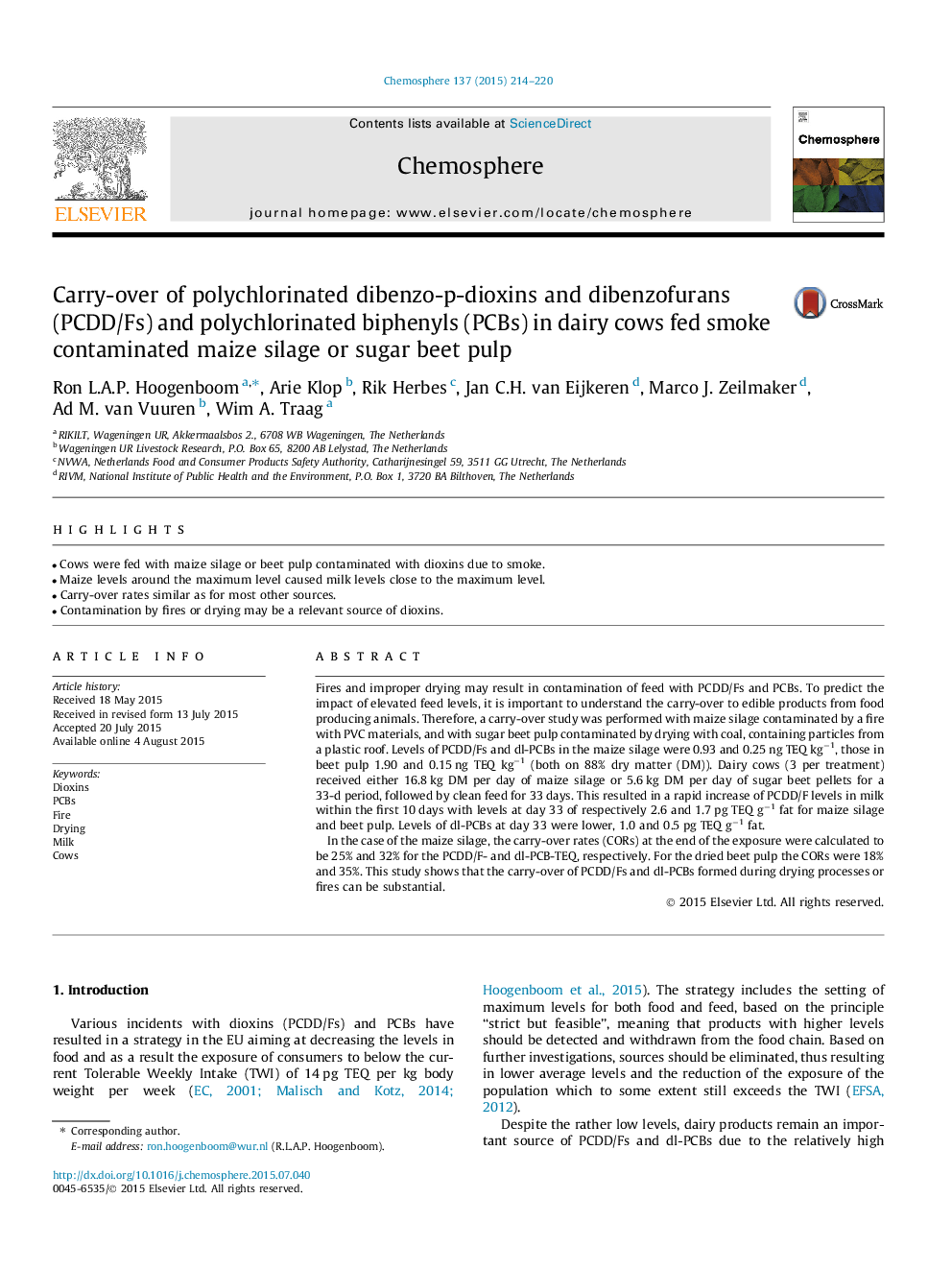| کد مقاله | کد نشریه | سال انتشار | مقاله انگلیسی | نسخه تمام متن |
|---|---|---|---|---|
| 4408241 | 1618834 | 2015 | 7 صفحه PDF | دانلود رایگان |

• Cows were fed with maize silage or beet pulp contaminated with dioxins due to smoke.
• Maize levels around the maximum level caused milk levels close to the maximum level.
• Carry-over rates similar as for most other sources.
• Contamination by fires or drying may be a relevant source of dioxins.
Fires and improper drying may result in contamination of feed with PCDD/Fs and PCBs. To predict the impact of elevated feed levels, it is important to understand the carry-over to edible products from food producing animals. Therefore, a carry-over study was performed with maize silage contaminated by a fire with PVC materials, and with sugar beet pulp contaminated by drying with coal, containing particles from a plastic roof. Levels of PCDD/Fs and dl-PCBs in the maize silage were 0.93 and 0.25 ng TEQ kg−1, those in beet pulp 1.90 and 0.15 ng TEQ kg−1 (both on 88% dry matter (DM)). Dairy cows (3 per treatment) received either 16.8 kg DM per day of maize silage or 5.6 kg DM per day of sugar beet pellets for a 33-d period, followed by clean feed for 33 days. This resulted in a rapid increase of PCDD/F levels in milk within the first 10 days with levels at day 33 of respectively 2.6 and 1.7 pg TEQ g−1 fat for maize silage and beet pulp. Levels of dl-PCBs at day 33 were lower, 1.0 and 0.5 pg TEQ g−1 fat.In the case of the maize silage, the carry-over rates (CORs) at the end of the exposure were calculated to be 25% and 32% for the PCDD/F- and dl-PCB-TEQ, respectively. For the dried beet pulp the CORs were 18% and 35%. This study shows that the carry-over of PCDD/Fs and dl-PCBs formed during drying processes or fires can be substantial.
Journal: Chemosphere - Volume 137, October 2015, Pages 214–220